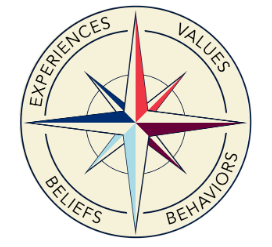By Ann Melinger and Sara Forner Howland
— June 10th, 2025
If you work in internal communications, you’ve probably felt the shift: culture is no longer a buzzword, it’s a business imperative.
That was the heart of our recent conversation at PRSA Connect, where we explored how communicators can use their organizational influence and expertise to become true catalysts for culture change.
In a room full of fellow comms pros, we examined what makes culture work, why it matters more than ever, and how we can use communication as a tool to drive sustainable culture change and business results.

What Is Culture, Really?
Culture isn’t what’s written on the walls or printed in a handbook. It’s what employees experience day in and day out. As we shared in our session, culture is a dynamic mix of values, behaviors, beliefs and experiences — and that combination shapes everything from employee engagement to innovation to business results.
And it’s not just philosophy, it’s data-backed. According to the SHRM State of Global Workplace Culture 2024, employees in positive cultures are almost four times more likely to stay with their current employer.
Similarly, McKinsey’s Organizational Health Index tells us that healthy organizations – those with teams aligned around a common direction – deliver three times the total shareholder return of their less healthy peers.
Culture isn’t fluff. It’s fuel.
Who Owns Culture?
One of the biggest myths about culture is that it’s “owned” by HR or a leadership team. The truth is, culture is a shared responsibility between senior leaders, HR and communicators. We believe that when an organization wants to shift its culture, communicators are uniquely equipped to lead the charge.
As strategic communicators, we sit at the intersection of messaging, people and leadership. We know how to tell a compelling story, facilitate meaningful dialogue and build connection across the business. We understand what motivates and holds employees back. We know how to push leaders for clarity and alignment. When we step into that power, we can shape culture in ways that drive real, lasting impact.
The Five Pillars of Culture Change
In our keynote, we walked through a framework that’s the cornerstone of our work at bink: five pillars for lasting culture change. No matter the organization size, industry or current culture, when an organization wants to strengthen or change its culture, these five pillars are the key.
Here’s a quick recap:
1. Listen
Culture change starts with understanding what’s real today. In order for any organization to achieve real culture change, it must gain a deep understanding of employees’ day-to-day experiences.
By examining existing data, conducting focus groups and listening sessions, and creating feedback loops, communicators can surface the truths and use them to shape what comes next.
2. Align
Culture can’t scale without a deeply aligned leadership team. Communicators are uniquely equipped to work with leaders to uncover and align around a shared cultural vision, by asking smart questions like: “What do we want our culture to look and feel like at its best?” “What aspects of our current culture enable performance, and what holds us back?” “How should our culture support our business strategy?”
3. Define
While this may seem simple, this is an area so many organizations simply get wrong. For culture to change and sustain over time, the foundational components of culture must be clearly defined and codified.
This includes things like mission, vision and core values. Communicators are the right people to ensure these culture building blocks are meaningful, memorable and actionable—not jargon-filled or generic.
4. Embed
Culture lives in the day-to-day. That’s why it’s critical to build communication strategies that bring your values and desired culture to life, from internal storytelling to rituals that reinforce what matters most.
One of the most powerful and yet often overlooked methods for solidifying and strengthening culture is tapping into people managers. After all, managers wield the most influence on employees’ daily experiences. They need to be able to both communicate AND role model the culture you want.
5. Sustain
Culture isn’t a campaign. It’s a living system. To truly shift and sustain a high-performance culture, it must be integrated into programs and policies and incorporated across key moments of your employee journey, from hiring and onboarding to learning and development and recognition.
Your Next Move
So, where do we go from here?
If you're in internal communications, you already have the power. You connect strategy to stories. You turn abstract values into everyday actions. You translate leadership vision into meaning for employees.
Now, you just need the conviction to step into it.
So start small:
Ask the tough questions.
Uncover what’s real.
Push for clarity.
Spotlight what good looks like.
Because culture isn’t just what’s said in town halls or hanging on the walls. It’s what people feel, believe and do every day.
